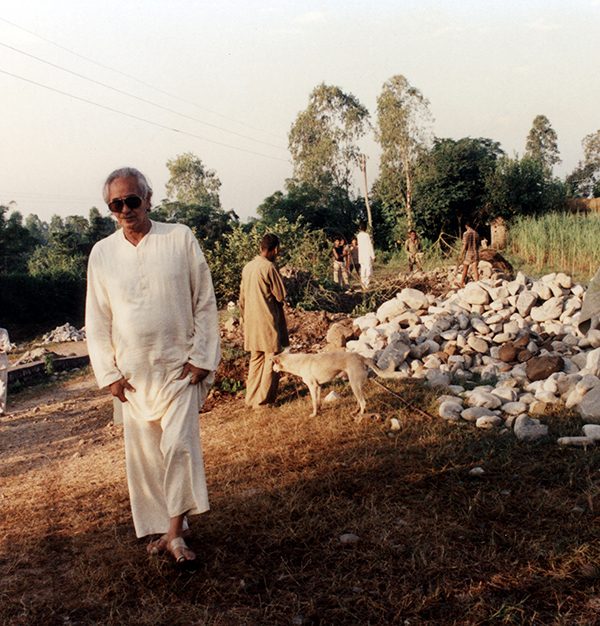June is a month of reflection, as it is the time that our founder Swami Rama seeded many things, whether the First International Yoga and Meditation Conference in USA in 1976 or establishing the Himalayan Institute Hospital Trust in 1989.
At these trying times across the world, it is worth seeing the efforts of both the incidents mentioned above. Under the stewardship of Swami Rama the first conference saw speakers and leaders from all orders, from the Lama tradition, the Hindu and Sufi, Jain and Sikh, Jewish and Christian orders, all to share their views. Speaking at the inaugural session, Swami Rama thanked all the speakers and organisers and said, “Once, when I was 12 years of age, I attended a conference at the foot of the Himalayan mountains, which was convened by a sage, Uriya Baba, and the theme of the conference was on a particular mantra of the most ancient scriptures of the world that we have today called Vedas. So, that great sage got up and said, ‘Pado asya sarvani bhutani. There are four feet. This whole universe is one foot of the Lord, and three feet are in the space.’ I was just a kid, and I got up and said, ‘What do you mean by space? I am in search of those three feet.’ And they could not satisfy me because I was ignorant; I did not understand much. I said, ‘I promise you when I will grow, I will hold a conference better than this, and I will request all the great orders of the world to explain where are those three padas.’ So one of the sages got up and said, ‘Son, let me explain to you where are those. Peace, happiness and bliss are these three steps of the unknown.’ ”
Swamiji went on to say that though all leaders of all great orders were present, still it was not designed to be a religious conference. They were there to discuss the practical aspects of all great traditions of the world, to impart the practical knowledge to those who are desirous of practicing. He also requested all the speakers to peacefully impart the knowledge and experience of their orders without condemning any other order or religion saying that it was time for the great leaders to impart their methods of contemplation and meditation freely to the aspirants present at the conference.
And moving on to 1992, while pursuing the permission for the Himalayan Institute of Medical Science (HIMS) with the Government of India, he wrote to them thus:
“HIMS is being constructed in Uttar Pradesh (now in Uttarakhand), the largest state of India in population and fourth largest in size. It is one of the poorest states of India with a population of well over 140 million. It is also among the poorest in terms of both medical resources and overall health indices, such as infant mortality rate and life expectancy. It is the most neglected area as far as education and health care is concerned. The people of these mountain areas do not have a referral hospital with modern diagnostic and treatment facilities. The nearest such facilities, in Meerut, Chandigarh, New Delhi and Lucknow, are not practical.
“Doctors from the plains and cities often do not wish to locate in these mountainous areas. Therefore, the Himalayan Institute Hospital Trust (HIHT) is proposing to start a new medical college in association with its 250-bedded tertiary level hospital, and its rural health and development program, to provide comprehensive health care in the Garhwal and Kumaon regions of U.P., and to train qualified students from this mountain area, so that they can remain in the region and serve the people after the completion of studies.
“The project is supported by a large group of non-resident Indians and other people from around the world including USA, Canada, Hong Kong, Malaysia, Singapore, England and Germany. This provides a significant investment of foreign currency and promotes foreign exchange. In addition to many leading physicians and medical faculty members in India, a large number of medical specialists, both India and non-Indian, currently practicing abroad, have shown great interest in serving the HIMS to promote rural health care.
“The mission of the Himalayan Institute Hospital Trust is to serve selflessly those in need, and to integrate science with preventive and alternative medicines through modern scientific research. The primary goal of HIMS is threefold: clinical service, medical and health education and multidisciplinary research. HIMS also incorporates Ayurveda, homeopathy, naturopathy, yoga and meditation in promoting holistic health.
“This is an NRI project free from party politics and estimated cost of this project is $250 million US dollars.”
“The Hospital and an Instrument of Social Development” was also drawn at the same time. Here Swamiji laid down his vision how the hospital would ensure trained health and development workers at the village level, enable health through mobile teams of medical professionals at primary level and through centers at secondary level. Lastly, that along with tertiary state of the art health care facilities, there would also be various educational institutions at the HIHT, which would keep service to society as their primary goal. Today, we have proudly completed three decades of service, as envisaged by Swami Rama.
Ms. B. Maithili, Director, Rural Development Institute

